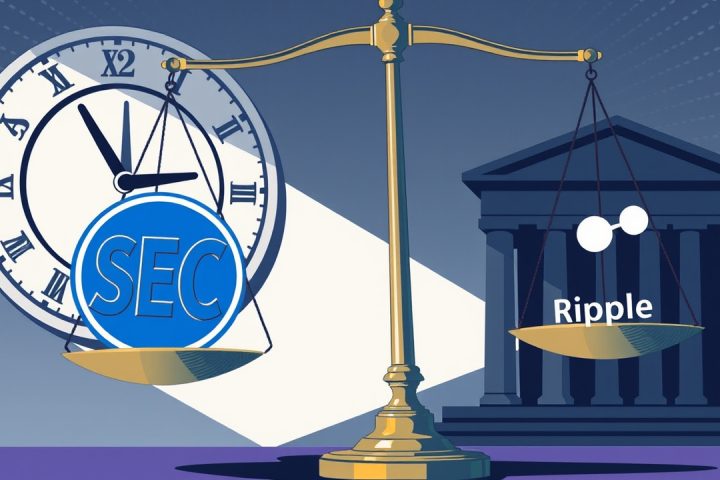Statement Summary
The 12th Annual Conference on Financial Market Regulation features discussions on vital topics, including the economic implications of private market investments by individuals and the issue of greenwashing in funds. Research indicates that individual investors in private equity see similar performance as institutional investors, challenging concerns over adverse selection. Innovations like low minimum commitment funds and pooled capital are expanding access for retail investors, which may lead to increased capital formation and diversification. Additionally, studies reveal that greenwashing funds charge higher fees, adversely impacting investor returns. Both topics are critical for regulatory frameworks aiming to protect investors while promoting diversification and ethical investing.
Original Statement
Welcome to the 12th Annual Conference on Financial Market Regulation. It is a pleasure to kick off this two-day conference. Thank you to all who have submitted papers in connection with the conference and to the discussants who have dissected them. I would also like to thank the staff of the Division of Economic and Risk Analysis, led by Dr. Robert Fisher, for their efforts in planning this program as well as our academic partners. Today’s program covers a number of timely topics. We have a number of different tracks at the conference, so I thought that I would briefly discuss two topics that caught my attention.
First, panelists will discuss the economic implications of individual investments in private markets. One panel will discuss findings related to a systematic study of private equity investments by individual investors. This topic directly impacts capital formation concerns, but also impacts the issue of expanding investment opportunities for individual investors.
Notably, the authors found that contrary to concerns about adverse selection, private equity investments by individual investors perform similarly to those of institutions and outperform public markets. Of particular interest, they identified three innovations that enable individuals to invest in private equity: “the proliferation of funds with low minimum commitments, pooling capital via advisors, and leveraging advisors’ networks to access fund managers.” These structural observations are relevant as the Commission looks at regulatory mechanisms to increase capital formation. The need to empower retail investment in private companies is critical – both from a capital formation perspective and from an investor diversification lens.
Additionally, in exploring ways to expand opportunities by promoting greater retail investing in private companies, changes to the accredited investor definition should be considered. While the accredited investor definition has served as the benchmark for financial sophistication on a national – and perhaps global – level, and has provided stability and predictability to market participants, we look to ways to address some potential unintended consequences of the standard during the forty-plus years since it was introduced.
In promoting opportunities for retail investment in private companies, we should not shy away from discussing the potential investment risks, including the risk of financial losses. However, investments in private, growth-stage companies that are higher-risk, higher-reward may be beneficial as part of a person’s diversified portfolio, particularly if the exposure is through pooled investment vehicles.
Modern portfolio theory supports the view that a more diversified portfolio impacts overall economic risk. As such, we should seek to modernize the exemptive landscape. If an individual believes that the risk is appropriate and the framework limits investors to those who are financially sophisticated, can sustain the risk of investment loss, can fend for themselves, and have other relevant characteristics, then our regulatory regime should not deny such individual a source of potential wealth accumulation and portfolio diversification.
While current and future regulatory proxies for financial sophistication may never be perfect, we should acknowledge that investor protection might also exist through diversification by expanding opportunities for individual investors to allow them to obtain the investment exposure through financial professionals operating under a best interest or fiduciary duty obligation.
Notably, recent investor surveys conducted by the Office of the Investor Advocate found that there is investor appetite by accredited and non-accredited investors for investing in private companies.
Specifically, 14.4% of accredited investors reported being “interested” in investing in this space, while 4.7% of non-accredited investors reported interest. Investors in both categories – including persons that are currently non-accredited but may be deemed accredited under any new potential standards—have a desire to optimize their investment returns. I appreciate the thoughtful economic research related to private markets – this research will likely inform any future policymaking.
Second, attendees will develop a better understanding of the extent to which funds engaged in “greenwashing” – and more specifically, how such practices impacted investors’ returns.
This is particularly interesting, given the focus on these types of funds recently. The authors of one paper presented this week, The Economics of Greenwashing Funds, found that “funds engaging in greenwashing charge higher fees while attracting greater flows from investors.” Charging higher average fees and thus impacting overall returns is concerning in any environment, especially when it is unclear whether improved outcomes were achieved. As it pertains to transactional and investment costs, I also note that the authors found that “greenwashing funds are more likely to incur regulatory costs and experience outflows, as reflected in ESG-related comment letters from the SEC.” To the extent that funds elect to pursue strategies not directly tied to financial performance of the underlying investments, investors should not be penalized through higher overall investment costs, without corresponding clear and unequivocal disclosure of the downsides of such strategies.
These are only two examples of the thoughtful and relevant topics in the program. There are many other interesting topics, including with respect to crypto. Your research will help inform policymaking and economic analysis in future regulatory endeavors. Thank you to the economists for your work and thank you for your participation in this conference. In addition to the presentations, I hope that there will be productive side conversations throughout the next two days. One never knows whether the next great idea will start with some notes jotted down on a napkin.
My remarks reflect solely my individual views as a commissioner and do not necessarily reflect the views of the full U.S. Securities and Exchange Commission or my fellow Commissioners.




